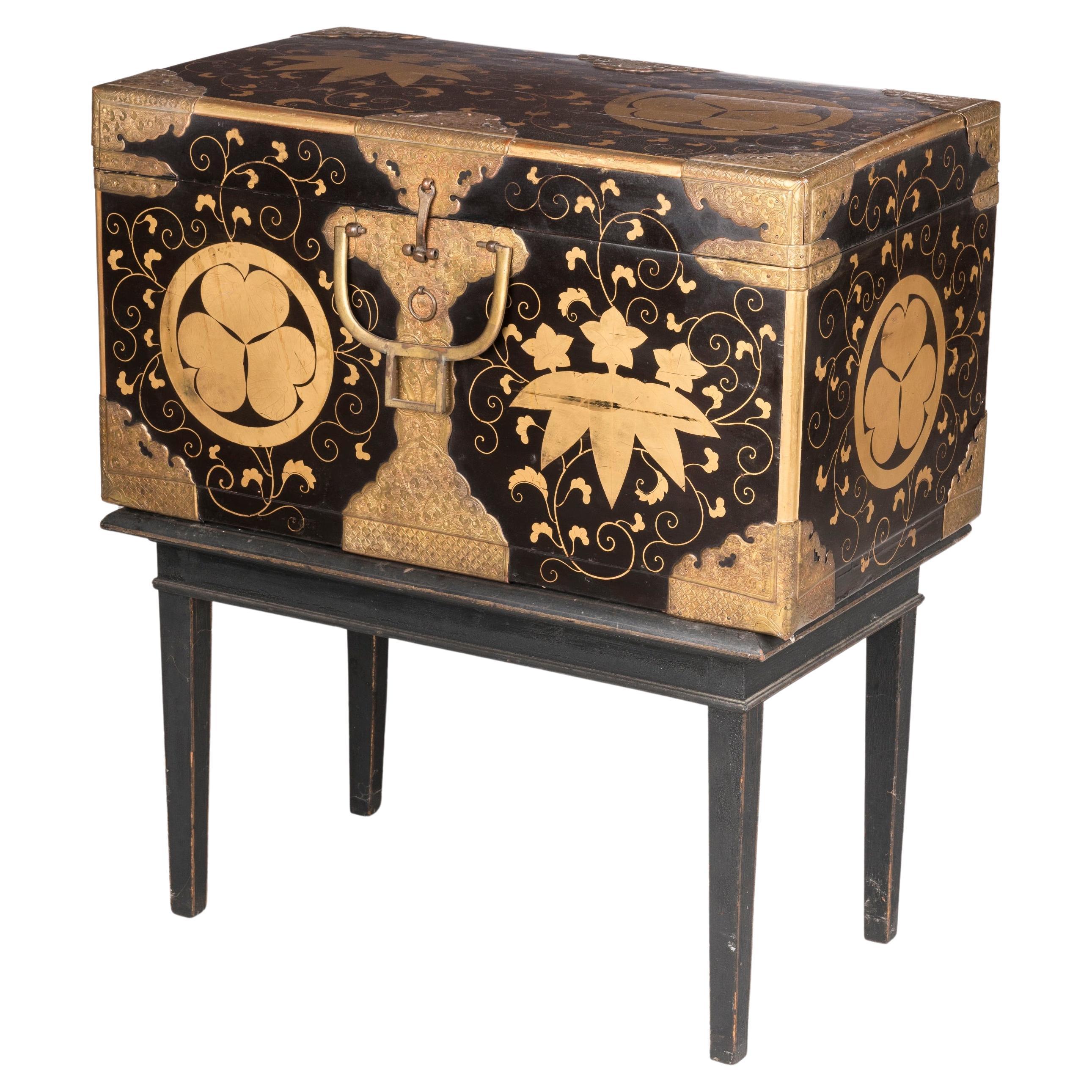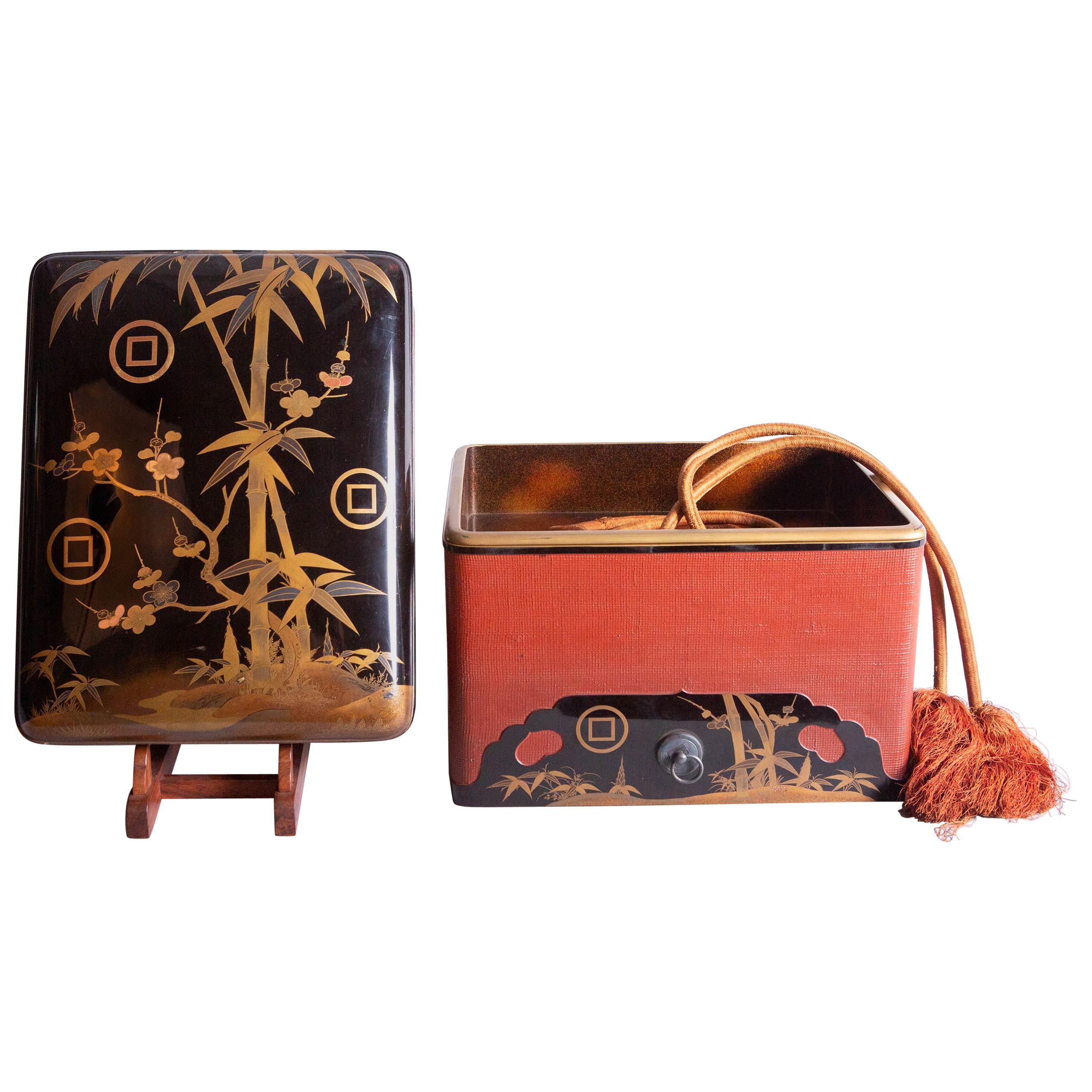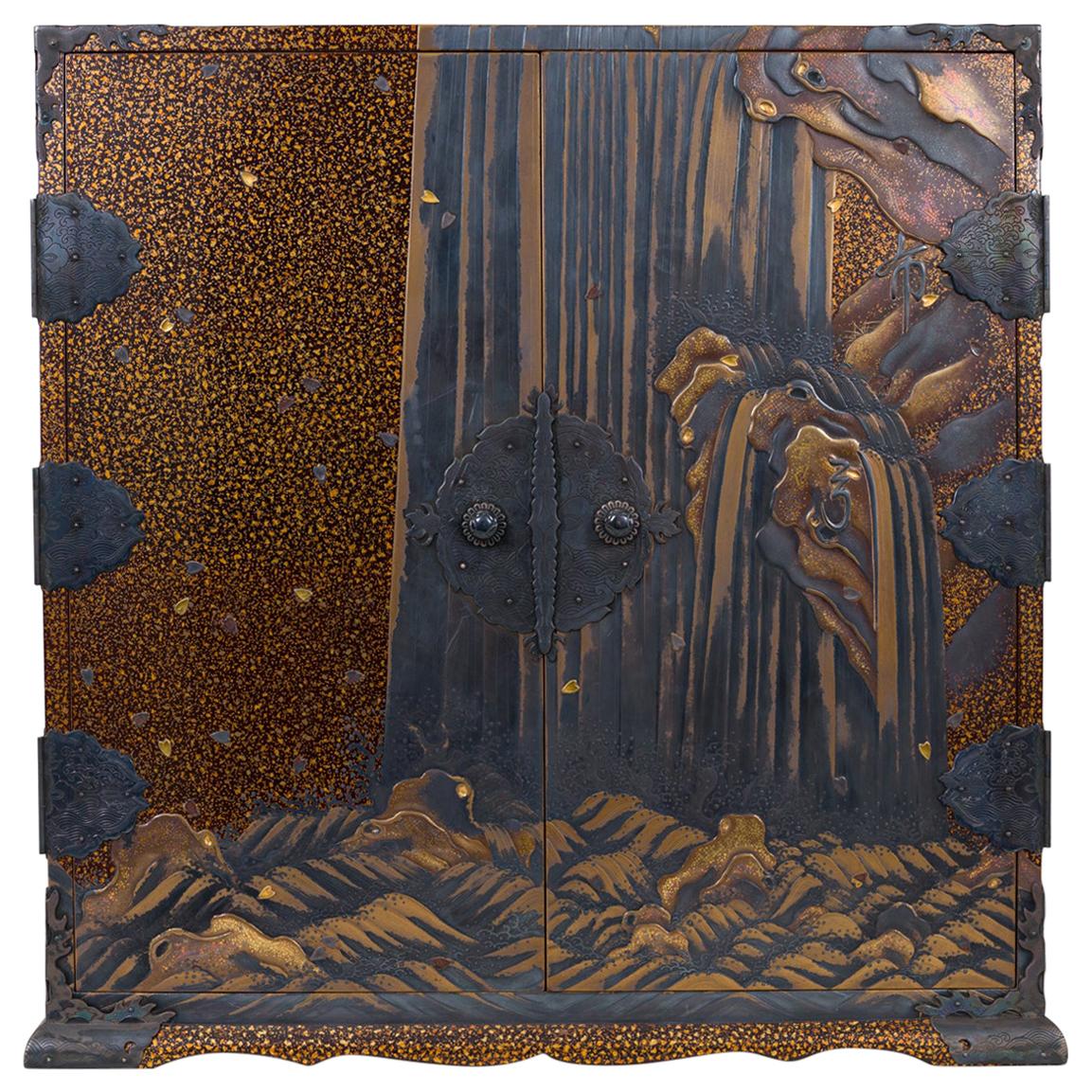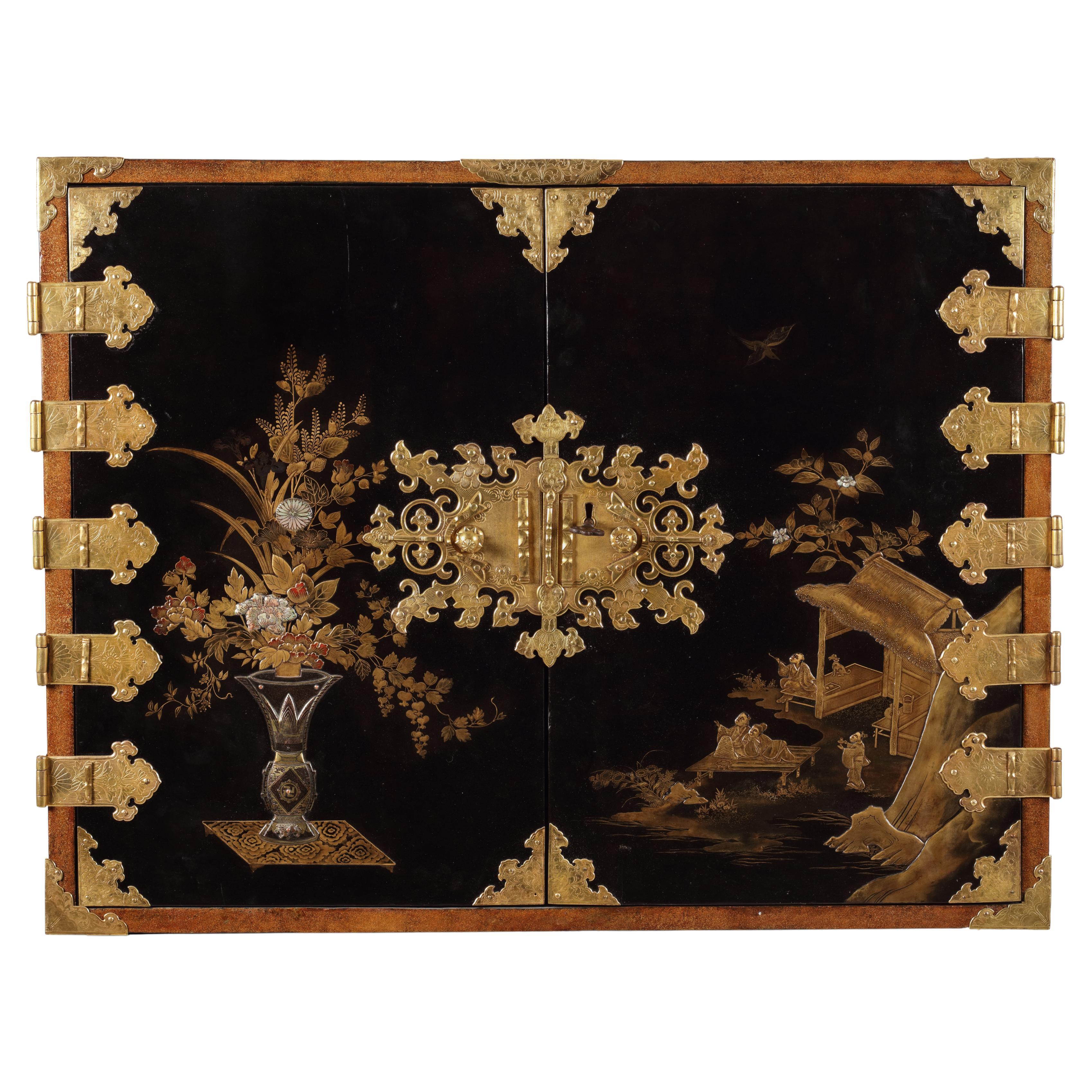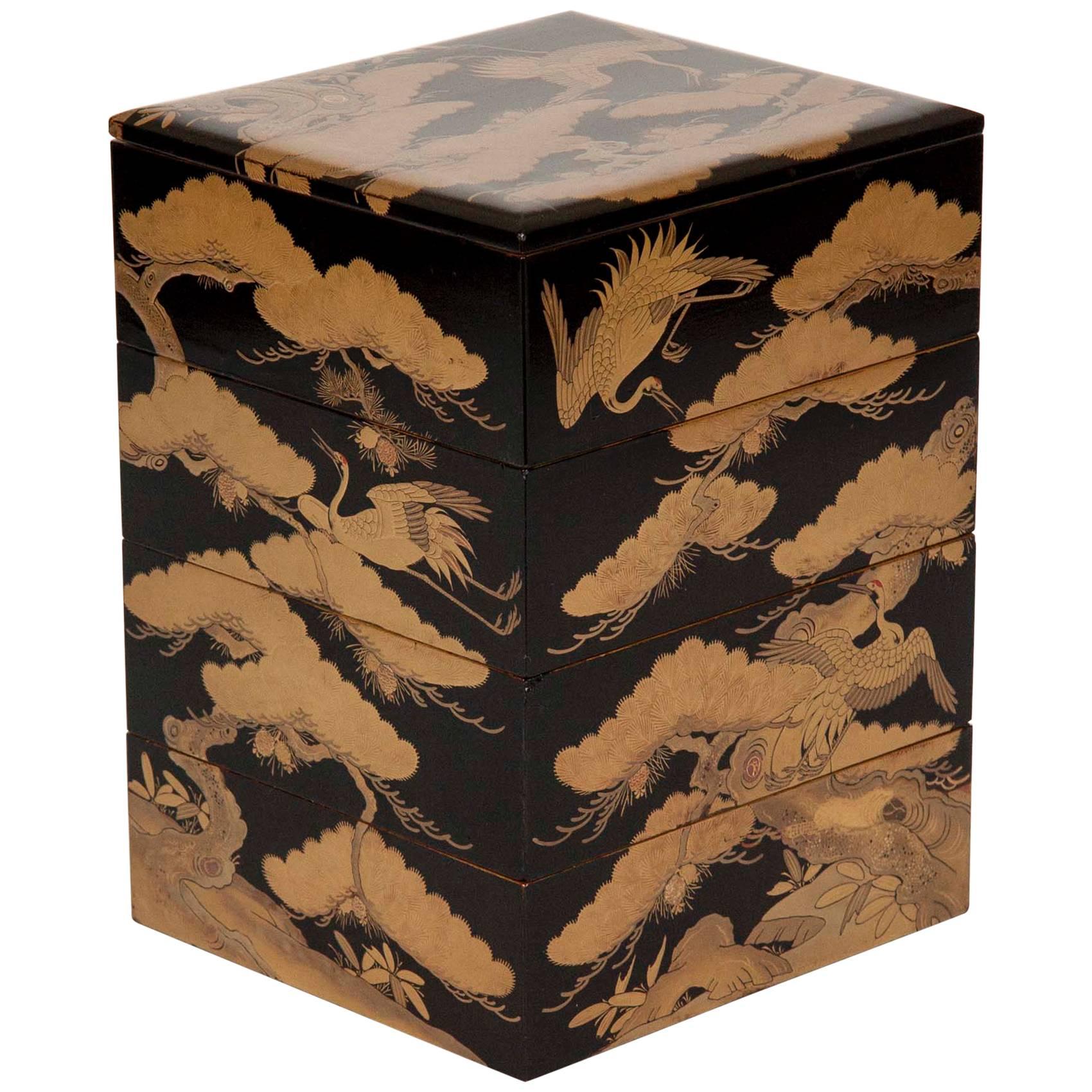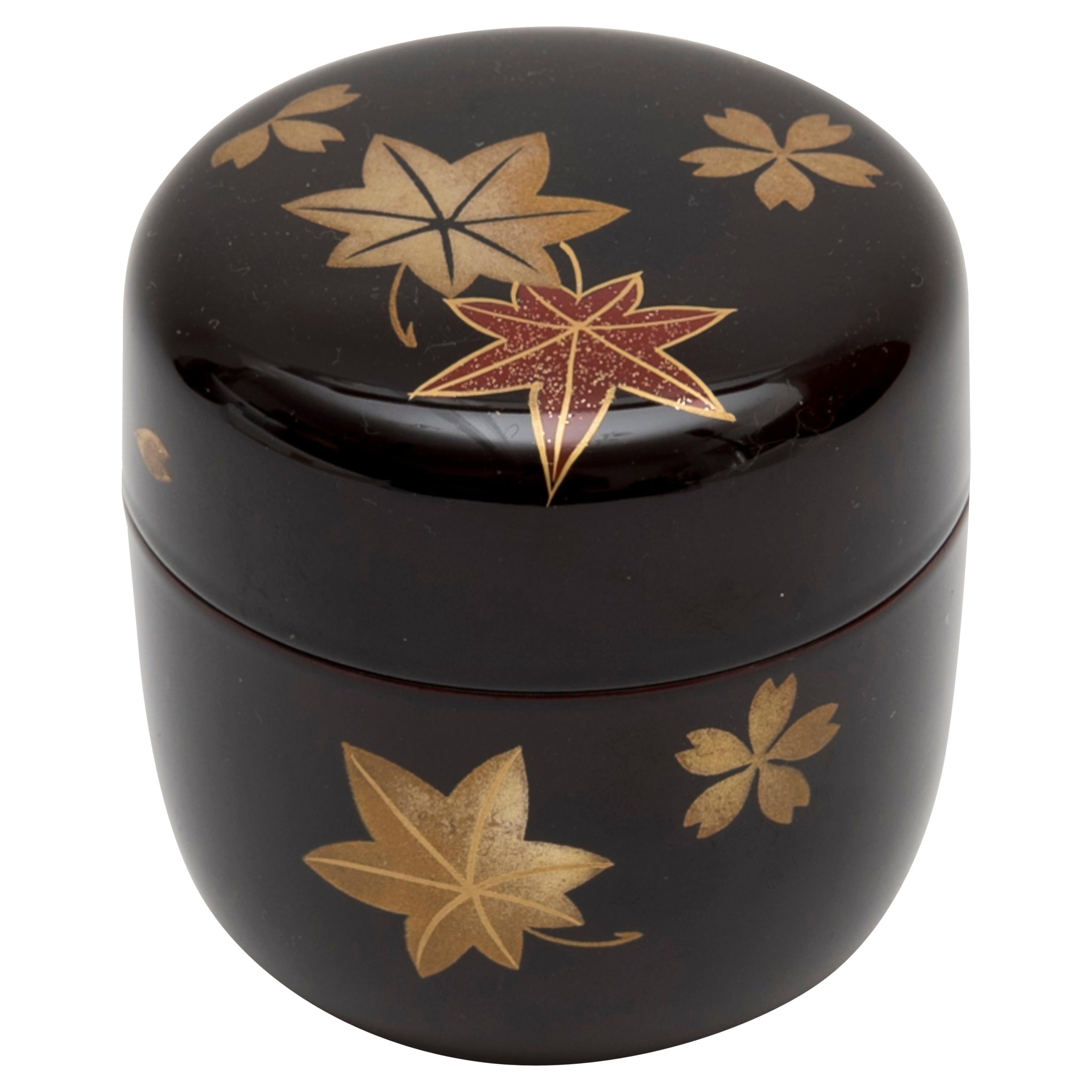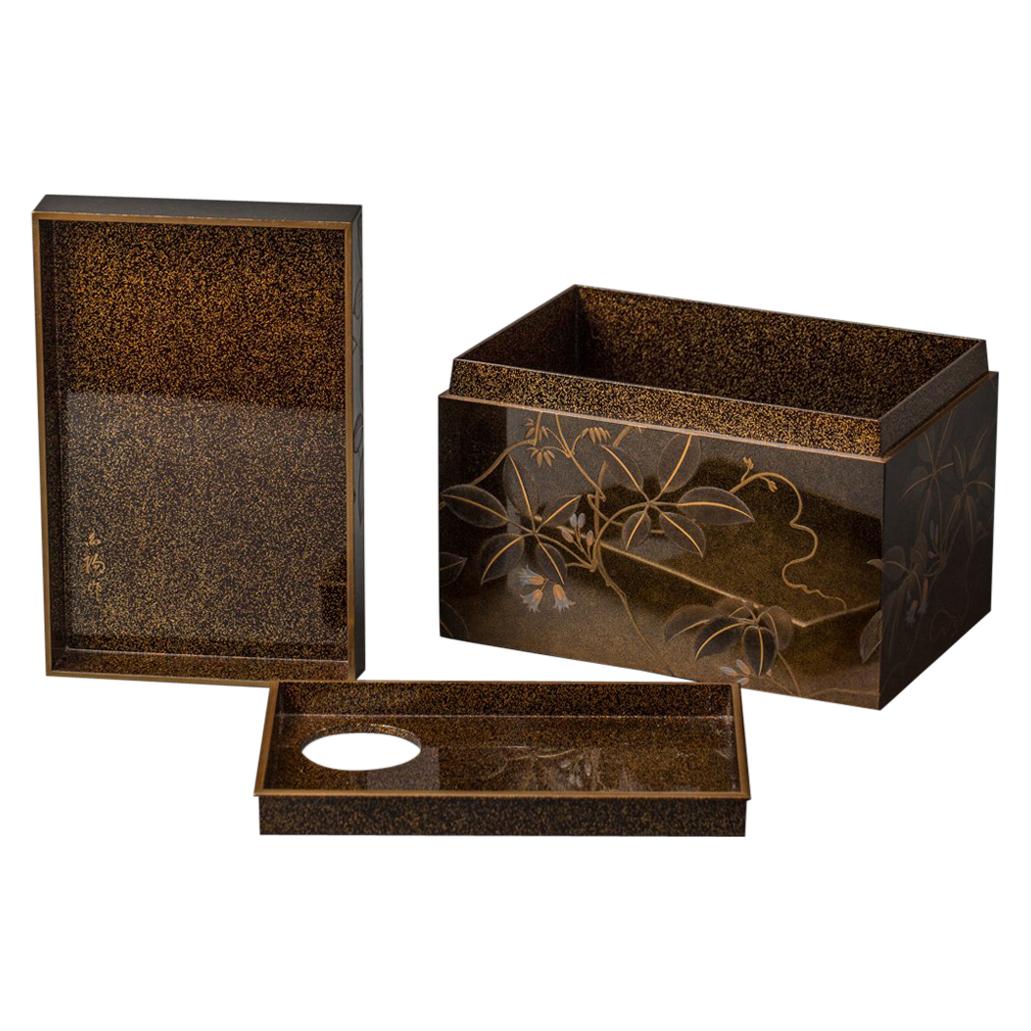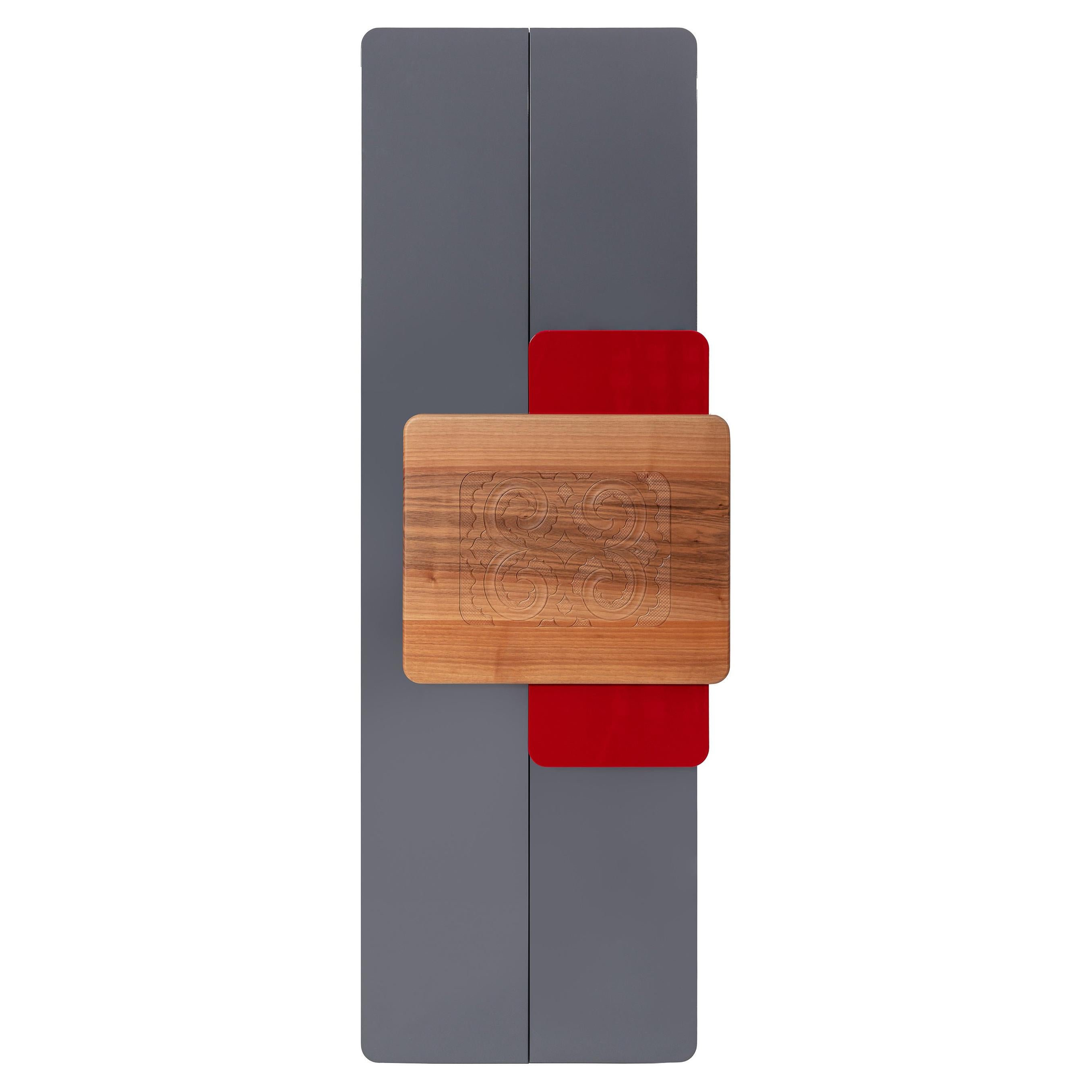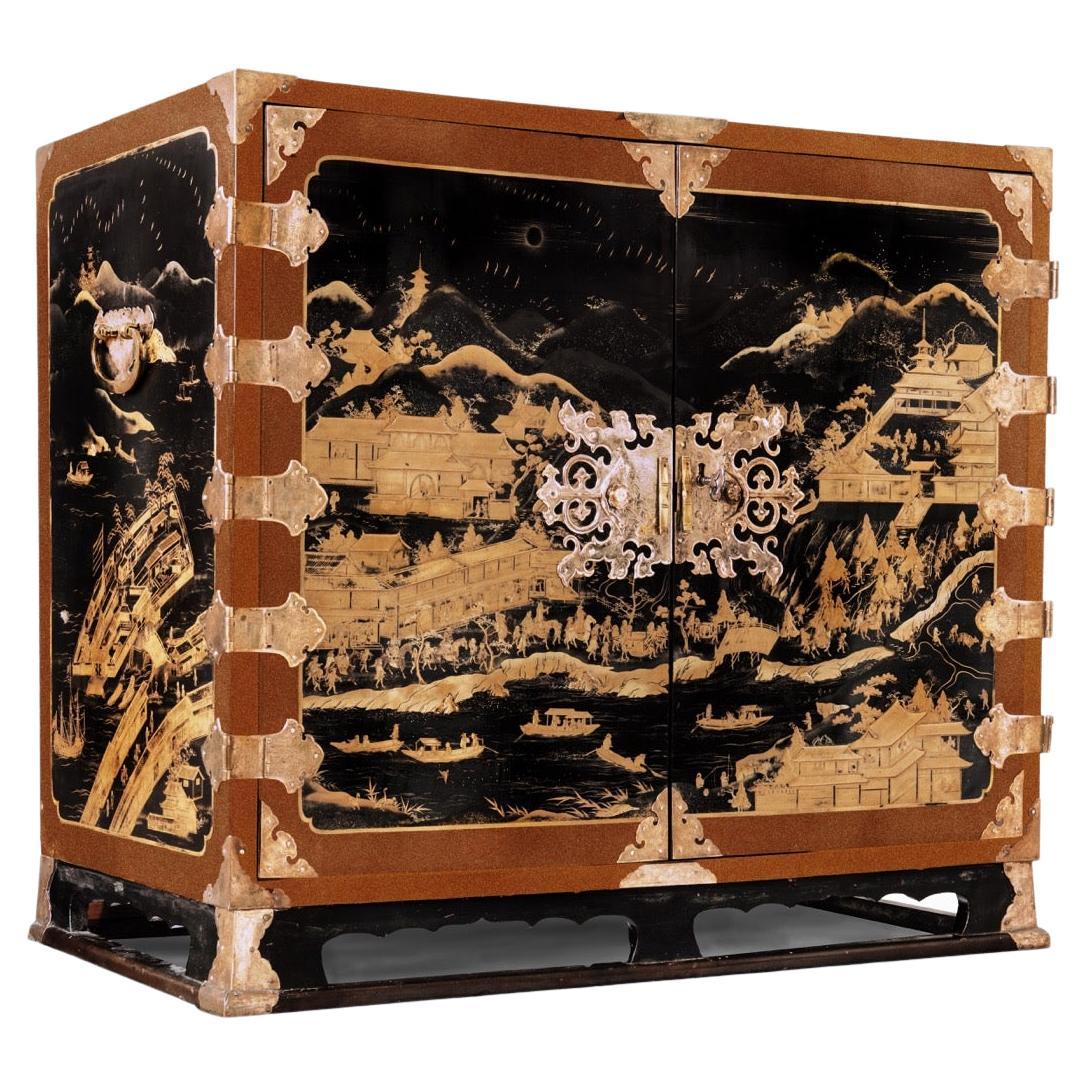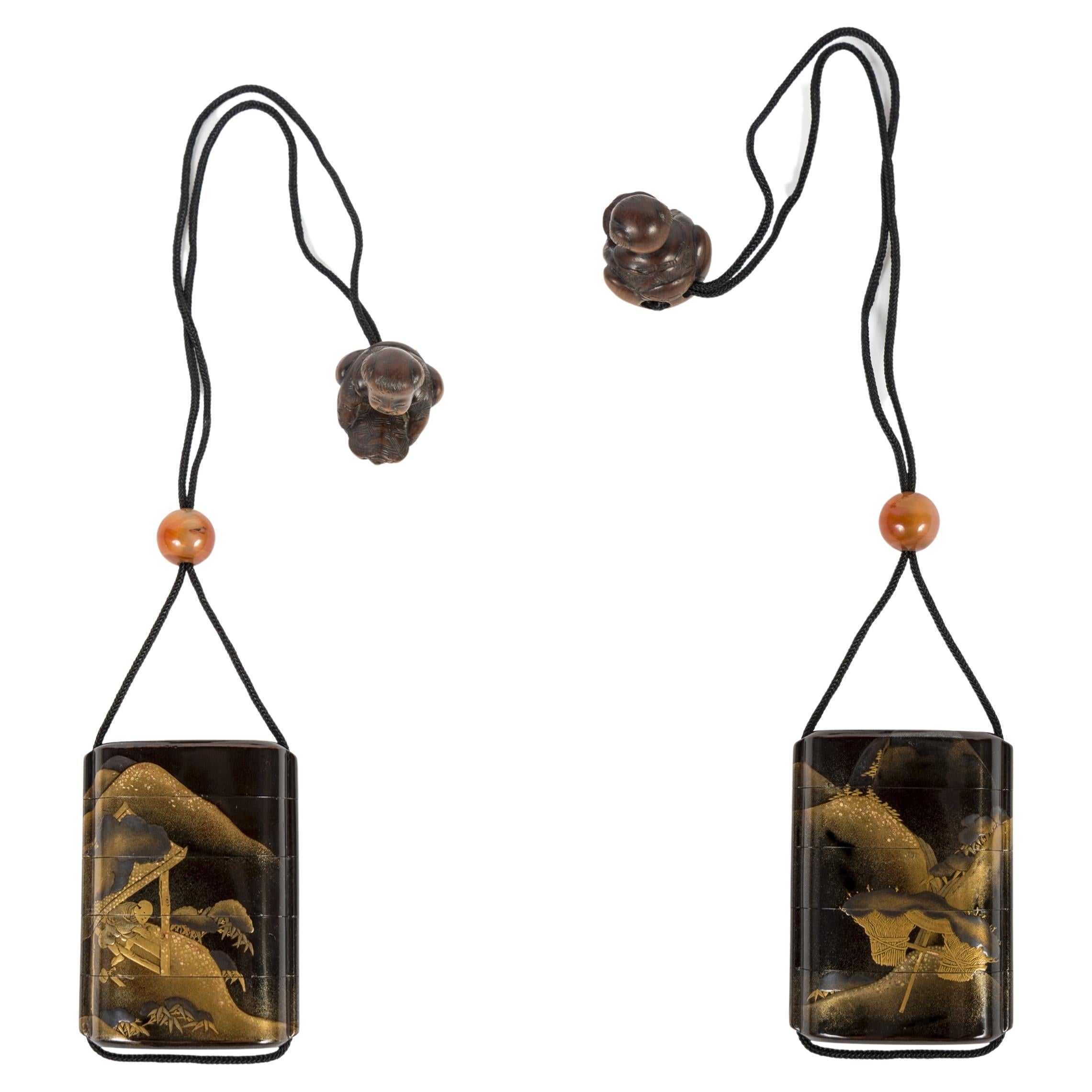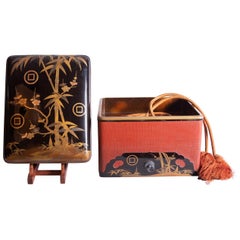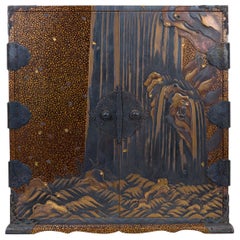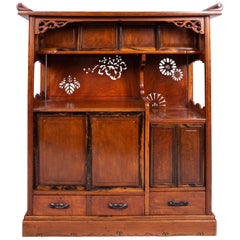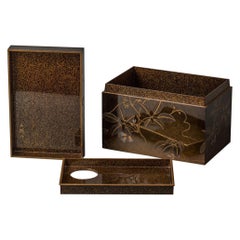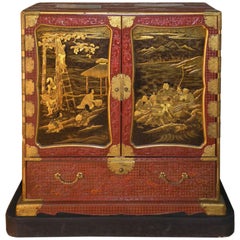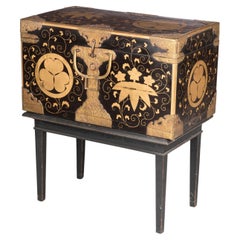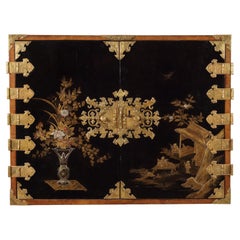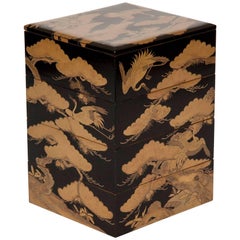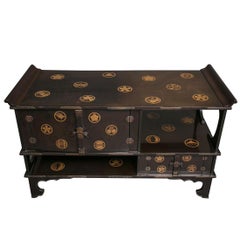
Japanese Black Lacquer Tana (Tiered Tea Cabinet) with Gold Family Crests
View Similar Items
Want more images or videos?
Request additional images or videos from the seller
1 of 13
Japanese Black Lacquer Tana (Tiered Tea Cabinet) with Gold Family Crests
$15,000List Price
About the Item
- Dimensions:Height: 20 in (50.8 cm)Width: 34.5 in (87.63 cm)Depth: 15.5 in (39.37 cm)
- Style:Edo (Of the Period)
- Materials and Techniques:
- Place of Origin:
- Period:
- Date of Manufacture:Early 19th Century
- Condition:Most items that are 100 years old have been cleaned or polished in their lifetime. More involved restorations are mentioned in the above description. For a detailed condition report and a video of this item please contact us directly. -Naga Antiques.
- Seller Location:Hudson, NY
- Reference Number:Seller: A37861stDibs: U090218855188
About the Seller
5.0
Recognized Seller
These prestigious sellers are industry leaders and represent the highest echelon for item quality and design.
Established in 1971
1stDibs seller since 2008
166 sales on 1stDibs
Typical response time: 10 hours
Associations
The Art and Antique Dealers League of AmericaAntiques Associations Members
Authenticity Guarantee
In the unlikely event there’s an issue with an item’s authenticity, contact us within 1 year for a full refund. DetailsMoney-Back Guarantee
If your item is not as described, is damaged in transit, or does not arrive, contact us within 7 days for a full refund. Details24-Hour Cancellation
You have a 24-hour grace period in which to reconsider your purchase, with no questions asked.Vetted Professional Sellers
Our world-class sellers must adhere to strict standards for service and quality, maintaining the integrity of our listings.Price-Match Guarantee
If you find that a seller listed the same item for a lower price elsewhere, we’ll match it.Trusted Global Delivery
Our best-in-class carrier network provides specialized shipping options worldwide, including custom delivery.More From This Seller
View AllJapanese Lacquer Box with Bamboo, Plum, and Family Crest
Located in Hudson, NY
Made with heavy gold flakes and lacquered fabric on wood, with cutout heart designs. Has an interior tray, and comes with silk tasseled ties. (Does not come with presentation stand).
Category
Antique 19th Century Japanese Lacquer
Materials
Lacquer
Japanese 19th Century Miniature Lacquer Chest with Waterfall
Located in Hudson, NY
Japanese 19th century miniature lacquer chest with waterfall. Late Edo to early Meiji period lacquer chest (mid to late 19th century) with two characters on the front reading Nuno an...
Category
Antique Late 19th Century Japanese Lacquer
Materials
Gold, Silver, Bronze
Japanese Tana 'Tea Cabinet' Made of Keyaki Wood
Located in Hudson, NY
Keyaki wood is a treasured and protected wood in Japan. The cabinet is decorated with cut forms of paulownia leaves, a symbol of the Tokugawa family, and chrysanthemums, the symbol o...
Category
Antique Late 19th Century Japanese Furniture
Materials
Wood
Japanese Lacquer Tea Box 'Chabako' with Flower Design
Located in Hudson, NY
Meiji period lacquer box with nashiji ground interior with tray that has an opening for the tea whisk. Comes with silk period jacket with ties and sugi wood collector's box. Artist s...
Category
Antique Late 19th Century Japanese Meiji Lacquer
Materials
Lacquer
Japanese Lacquer Kogo 'Incense Box'
Located in Hudson, NY
Late Edo (1614 - 1868) period incense storage box in stacked, double fan design. Fans have bamboo and plum design with a chrysanthemum crest. Silve...
Category
Antique Mid-19th Century Japanese Edo Lacquer
Materials
Gold
Japanese Lacquer Koro 'Incense Burner'
Located in Hudson, NY
Removable bronze top, with gold drip pattern at top. Cresting ocean waves on bottom with raised silver sea spray.
Category
Antique Early 19th Century Japanese Edo Lacquer
Materials
Silver, Bronze
You May Also Like
Japanese Lacquer and Cinnabar "Samurai" Cabinet, Inaba Family, Edo Period
Located in Troy, NY
Exceptionally large and rare lacquer cabinet. According to the heraldry, visible on the headgear in one of the panels, it was made for the Inaba family, a high ranking Daimyo family,...
Category
Antique Late 19th Century Japanese Edo Lacquer
Materials
Wood
Japanese Edo Period Black & Gold 'Nagamochi' Dowry Trunk with Family Crests
Located in London, GB
A Fine Black & Gold Lacquer
Japanese Nagamochi Trunk
With Family Crests of the Tokugawa and Minamoto Clans
Of rectangular form, the storage trunk covered on all sides with hiramak...
Category
Antique 19th Century Japanese Edo Lacquer
Materials
Lacquer
Extremely Fine and Rare 17th-Century Japanese Export Lacquer and Inlaid Cabinet
Located in Amsterdam, NL
An extremely fine and important Japanese lacquer cabinet with gilt-copper mounts for the European market
Edo period, late 17th century
The pictorial style decorated rectangular...
Category
Antique Late 17th Century Japanese Lacquer
Materials
Brass
Price Upon Request
Free Shipping
Japanese Black Lacquer Jubako Box with Stork Motif
Located in Stamford, CT
A four-tier Japanese Meiji period black lacquer Jubako box with stork and fir tree decoration. Box in four sections with lid.
Category
Antique Late 19th Century Japanese Edo Lacquer
Materials
Lacquer
Japanese Lacquered Natsume 'Tea Box'
Located in PARIS, FR
Natsume in dark red lacquer, decorated with autumn leaves and cherry blossoms in hiramaki-e and nashiji. Interior in black lacquer.
Maple leaves (Momiji) are celebrated in literatur...
Category
Mid-20th Century Japanese Lacquer
Materials
Lacquer
6-drawer cabinet of lacquer carved wood and steel from SoShiro Ainu collection
By SoShiro
Located in London, GB
The All Aid Wellness Cabinet from SoShiro’s Ainu collection, a collaboration between award-winning artist Toru Kaizawa and Shiro Muchiri, was initially imagined as a large-scale medi...
Category
2010s Japanese International Style Lacquer
Materials
Stainless Steel
Recently Viewed
View AllMore Ways To Browse
Japanese Tea Cabinet
Japanese Shi Shi
Shi Shi Dogs
Vintage Industrial Cabinet
Mahogany And Ormolu Mounts
Treasure Cabinet
Glass Show Case
1960s Kitchen Cabinet
Wooden Glass Cabinet
Art Deco Interior Doors
Art Deco Walnut Cabinets
Antique Art Deco Cabinet
Early Oak Doors
Fluted Doors
Italian Door Panel
Steel Kitchen Cabinet
Industrial Metal Cabinets
Door Molding

